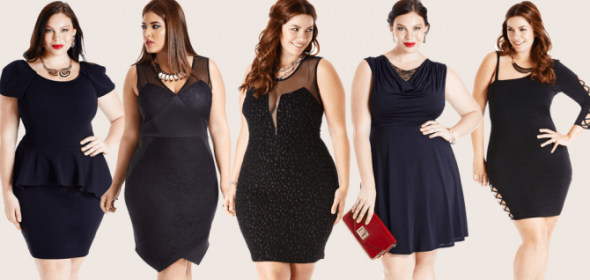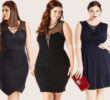Will the Fashion Industry Ever Accept Plus Sizes?
- June 7, 2019

You may have heard of model Ashely Graham and possibly Tess Holliday, but in what capacity? Are you aware that they are two beautiful catwalk models who have a massive following in their wake for their incredible style of dress sense? Or are you only aware of the two women solely because they are what is known in the fashion industry as plus-sized models?
If it’s a case of the latter, then you aren’t alone for it seems that Graham and Holliday’s reputation is more built on being a plus-size model, rather than what they should really represent which is merely a catwalk model.
For as long as I can remember this industry has long had a bad reputation when it comes to representing the average woman in fashion. It’s no secret that a considerable proportion of fashion designers and fashion houses prefer to see a skinny young female parading down the catwalk in their clothes.
Ever since I have worked in the world of fashion, this has been the norm for nearly all fashion shows. However, no matter how far we move towards changing perceptions everywhere else, it seems that we are still yet to do so in the fashion industry when it comes to portraying real women, and indeed real men.
There Is No One Size Fits All in Real Life.
Now I’m not about to start bashing skinny models. Small, petite and thin women do in fact exist in the real world. However, so too do larger, bigger and indeed fuller women. It’s not a slur to say, instead, it is a fact of life. So, why is it that when we watch a fashion show, all these varying types of women do not even get a look in when it comes to parading down that catwalk?
Holliday and Graham have mentioned many times in their career that on many occasions when this subject has made the front pages, they will often receive several requests to appear on the catwalk. However, both will agree that it is usually a form of tokenism, with no further intentions of including them or any other plus-sized model back after that one performance. In short, it is all for show for as long as the story holds the front pages that week!
Plus Size Fashion Models Do Not Feel Welcome at Such Shows
What angers me more about inviting plus-sized models into shows is how they are then asked to walk next to those ultra-thin models who permeate every catwalk from Paris to Los Angeles. Okay, you may say both walking side by side is an excellent representation of the real world, but if you look a little closer, I think you’ll find that this is not actually the case.
What happens here is that there is only one plus-sized model, and the rest of the models are then all one size, that is skinny, with no variations. This makes the plus-sized model appear so apparently out of place and therefore not able to look natural on the catwalk, with all eyes on her for all the wrong reasons – a sympathy vote, if you must, to please the masses.
It is therefore easy to see why so many of us feel that the fashion world will never be accessible by all if they continue to put on occasional shows like this, which reek of feeble positive body imagery all around. This means that such models continue to feel a part of tokenism, and quite honestly at this stage that is undoubtedly what they still are.
High Street Stores Taking the Lead
There is one area where plus-sized women are considered and even catered for when it comes to the world of fashion, and that is increasingly through the high street stores. Vast numbers of brands have realized that this is where the money is to be made and that women of all shapes and sizes do indeed want to look good in their clothes.
Many high street stores will cater for all sizes with ranges going as far as size 30 in some areas. These are the stores which see all sizes and shapes of women on a regular basis and therefore understand the frustrations and limitations the broader fashion industry creates by producing shows which only show one body type.
In short, high street stores are the ones who know full well that what we are shown on the catwalks is merely a world away from the types of customers that they sell to every day of the week. However, although such stores are continuing to do well and produce clothing for the fuller figured of women, this fact still fails to filter down the catwalk and into the backstage areas of current fashion shows.
Modeling Agencies Now Taking Note
This high street recognition is though beginning to make its way through to the modeling agencies themselves, and consequently, some agencies are taking on slightly more of a wide range of body types to add to their books. Specific agencies report that they will send several sizes of models on their books to one casting to ensure that the overall changing figure of women is accurately represented.
However, considering that many of these agencies admit to not being asked to do so, it still throws that initial problem straight back at the many designers and labels who cannot see the problem in requesting one body type only at their castings.
This ultimately leads straight back to what Graham and Holliday have noted as token roles, with many plus-sized models, or indeed any other model appearing as different to the current catwalk norm, automatically feeling like a symbolic piece. This is more so when they are the only one present at fashion castings that looks significantly different from what unfortunately has become established as a typical catwalk model shape – that is immensely skinny.
A considerable number of us women, long for that day to come when women such as Graham and Holliday aren’t considered anything other than standard and appear alongside many other different body types on the catwalk representing every other woman, not just those currently portrayed on fashion show catwalks.







